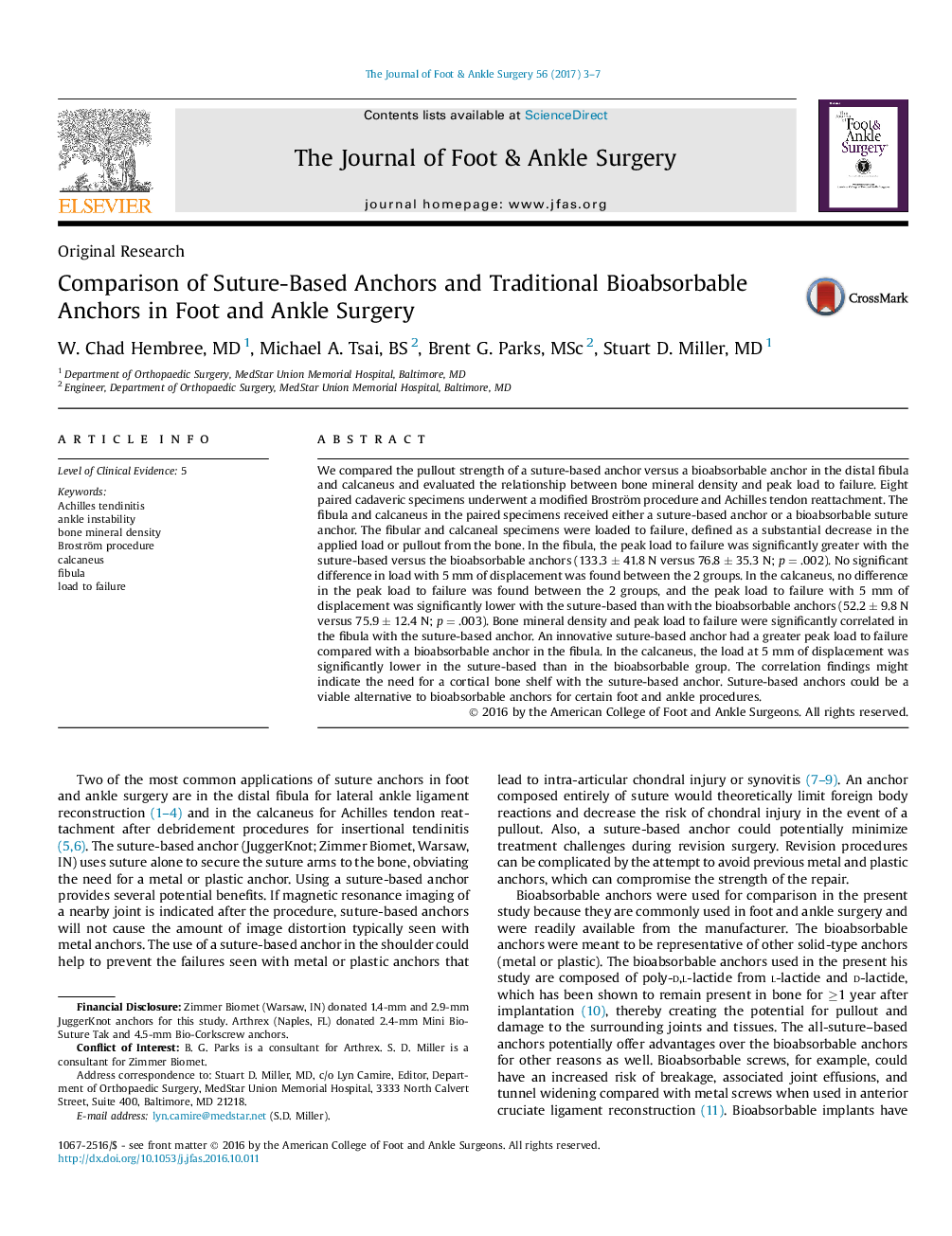| Article ID | Journal | Published Year | Pages | File Type |
|---|---|---|---|---|
| 5576169 | The Journal of Foot and Ankle Surgery | 2017 | 5 Pages |
Abstract
We compared the pullout strength of a suture-based anchor versus a bioabsorbable anchor in the distal fibula and calcaneus and evaluated the relationship between bone mineral density and peak load to failure. Eight paired cadaveric specimens underwent a modified Broström procedure and Achilles tendon reattachment. The fibula and calcaneus in the paired specimens received either a suture-based anchor or a bioabsorbable suture anchor. The fibular and calcaneal specimens were loaded to failure, defined as a substantial decrease in the applied load or pullout from the bone. In the fibula, the peak load to failure was significantly greater with the suture-based versus the bioabsorbable anchors (133.3 ± 41.8 N versus 76.8 ± 35.3 N; p = .002). No significant difference in load with 5 mm of displacement was found between the 2 groups. In the calcaneus, no difference in the peak load to failure was found between the 2 groups, and the peak load to failure with 5 mm of displacement was significantly lower with the suture-based than with the bioabsorbable anchors (52.2 ± 9.8 N versus 75.9 ± 12.4 N; p = .003). Bone mineral density and peak load to failure were significantly correlated in the fibula with the suture-based anchor. An innovative suture-based anchor had a greater peak load to failure compared with a bioabsorbable anchor in the fibula. In the calcaneus, the load at 5 mm of displacement was significantly lower in the suture-based than in the bioabsorbable group. The correlation findings might indicate the need for a cortical bone shelf with the suture-based anchor. Suture-based anchors could be a viable alternative to bioabsorbable anchors for certain foot and ankle procedures.
Related Topics
Health Sciences
Medicine and Dentistry
Orthopedics, Sports Medicine and Rehabilitation
Authors
W. Chad MD, Michael A. BS, Brent G. MSc, Stuart D. MD,
